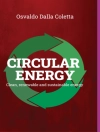In 1984 Desmond O’Connor and David Phillips published their comprehensive book „Time-correlated Single Photon Counting“. At that time time-correlated s- gle photon counting, or TCSPC, was used primarily to record fluorescence decay functions of dye solutions in cuvettes. From the beginning, TCSPC was an am- ingly sensitive and accurate technique with excellent time-resolution. However, acquisition times were relatively slow due to the low repetition rate of the light sources and the limited speed of the electronics of the 70s and early 80s. Moreover, TCSPC was intrinsically one-dimensional, i.e. limited to the recording of the wa- form of a periodic light signal. Even with these limitations, it was a wonderful te- nique. More than 20 years have elapsed, and electronics and laser techniques have made impressive progress. The number of transistors on a single chip has approximately doubled every 18 months, resulting in a more than 1, 000-fold increase in compl- ity and speed. The repetition rate and power of pulsed light sources have increased by about the same factor.
Tabela de Conteúdo
Optical Signal Recording.- Overview of Photon Counting Techniques.- Multidimensional TCSPC Techniques.- Building Blocks of Advanced TCSPC Devices.- Application of Modern TCSPC Techniques.- Detectors for Photon Counting.- Practice of TCSPC Experiments.- Final Remarks.- References.
Sobre o autor
Wolfgang Becker is a specialist of optical short-time measurement techniques and obtained his Ph D 1979 in Berlin, Germany. Since 1993 he is the head of Becker & Hickl Gmb H in Berlin. His field of interest is development and application of time-correlated single photon counting techniques. He is an amatuer astronomer and telescope maker and likes cats, skiing and beach volleyball.












